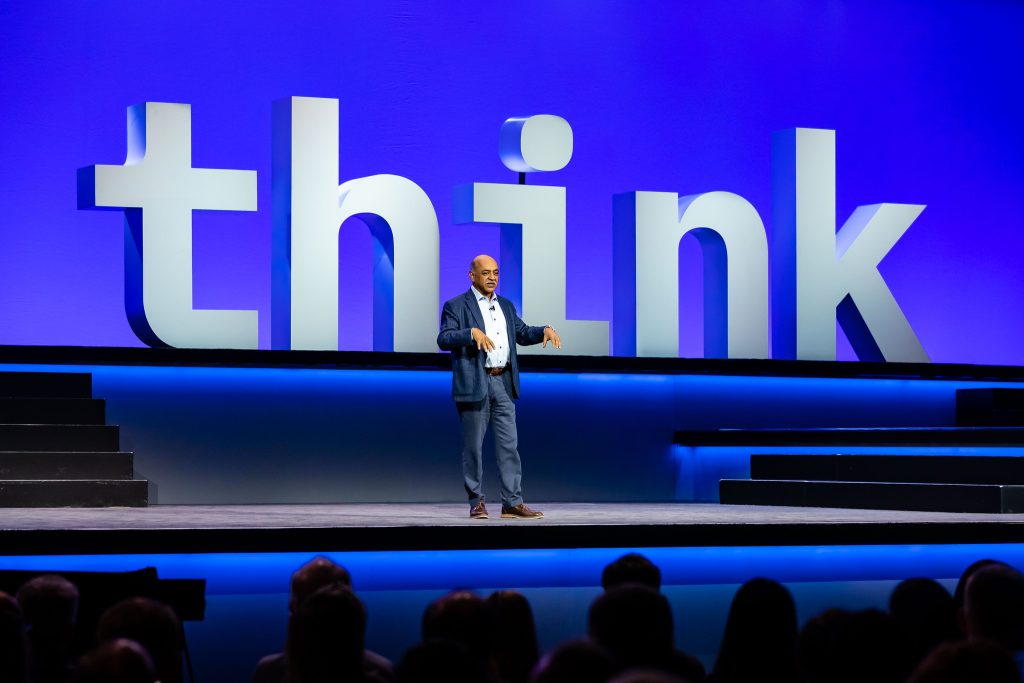Research News and Market Data on TNXP
June 05, 2023 7:00am EDT
Tianeptine’s Mechanism of Restoring Neuroplasticity and Neurogenesis by Dual PPAR-β/δ and PPAR-γ Agonism Supports Development as a First-in-Class Oral Therapy for Psychiatric and Neurodegenerative Diseases
Racemic Tianeptine, or TNX-601 ER, is Enrolling in a Potentially Pivotal Phase 2 Study for the Treatment of Major Depressive Disorder; Results from Interim Analysis Expected Fourth Quarter 2023
Single (S)-Isomer of Tianeptine, or TNX-4300, is Free from µ-Opioid Receptor Activity Associated with the (R)-Isomer
TNX-4300 is in Preclinical Development for Depression, Bipolar Disorder, Alzheimer’s Disease and Parkinson’s Disease
CHATHAM, N.J., June 05, 2023 (GLOBE NEWSWIRE) — Tonix Pharmaceuticals Holding Corp. (Nasdaq: TNXP) (Tonix or the Company), a clinical-stage biopharmaceutical company, today announced the presentation of data detailing the mechanism of action and pharmacokinetics of TNX-601 ER (tianeptine hemioxalate extended release) and TNX-4300 (estianeptine) at the American Society of Clinical Psychopharmacology (ASCP) meeting in Miami, Fla. TNX-601 ER is being tested in a potentially pivotal Phase 2 trial for the treatment of major depressive disorder (MDD) for which results of a preplanned interim analysis are expected in the fourth quarter of 2023. TNX-4300 is in preclinical development for mood disorders, Alzheimer’s disease and Parkinson’s disease. The active ingredient of both products is the (S)-isomer of tianeptine.1 The (S)-isomer of tianeptine activates PPAR-β/δ, restores neuroplasticity in neuronal tissue culture and lacks µ-opioid liability. In contrast, the (R)-isomer of tianeptine lacks PPAR-β/δ activity and is an agonist at the µ-opioid receptor. The poster presentation is available on Tonix’s website: www.tonixpharma.com.
Tonix recently announced that the plastogen anti-depressant tianeptine, a drug marketed outside the U.S. for more than 30 years, acts on nuclear PPAR-β/δ and PPAR-γ in neurons and glia to restore neuronal connectivity in depression.2 The understanding that tianeptine bypasses the synapse and acts on the nucleus to exert its effects on restoring neuroplasticity and neurogenesis has direct applicability in a number of neurodegenerative diseases in which neuronal connections are atrophying.2 The newly reported mechanism also provides clarity on why tianeptine is not associated with sexual dysfunction, weight gain or several other treatment-limiting toxicities, which are associated with the antidepressants currently marketed in the U.S. for long-term use.
“Restoring atrophied neuronal connections in psychiatric and neurodegenerative diseases has the potential to achieve better and more durable outcomes,” said Seth Lederman, M.D., Chief Executive Officer of Tonix Pharmaceuticals. “The tianeptine marketed outside the U.S. for treating depression is a 1:1 racemic mixture of two mirror image isomers. Our team of scientists isolated and characterized the (S)-isomer of tianeptine, which is free from µ-opioid receptor activity and is now under development as TNX-4300 for treating psychiatric and neurodegenerative diseases. The (S)-isomer of tianeptine is responsible for tianeptine’s activity on PPAR-β/δ and restoring neuroplasticity and neurogenesis, while the (R)-isomer is responsible for any off-target activity on the µ-opioid receptor.”
The findings reported at the meeting show how the pharmacokinetics of oral TNX-601 ER in humans differ from intraperitoneal (i.p.) tianeptine in mice. In humans, after an oral dose of TNX-601 ER the half-life of tianeptine in the blood is approximately 5-7 hours. In contrast, in mice after an i.p. dose of tianeptine the half-life of tianeptine in the blood has been reported to be less than approximately 30 minutes and the behavioral effects appear dominated by the longer-lasting MC5 metabolite, which maintains µ-opioid receptor activity.3 The data Tonix presented also show that the (R)-isomer of tianeptine is responsible for the decrease in immobility in the mouse forced swim test after i.p. administration, which is consistent with previous reports that the effect of tianeptine on the forced swim test is a µ-opioid receptor-dependent phenomenon.3
Gregory Sullivan, M.D., Chief Medical Officer of Tonix Pharmaceuticals, said, “From our clinical studies on volunteers, after oral dosing with TNX-601 ER, the extended pharmacokinetics of parent tianeptine is consistent with tianeptine exerting activity on PPAR-β/δ and resulting in neurorestorative effects. In contrast, after i.p. dosing of tianeptine in mice, the exposure of tianeptine is brief and the behavioral effects appear dominated by the MC5 metabolite.3 While tianeptine’s MC5 metabolite has been reported to maintain µ-opioid receptor activity3, we found that MC5 metabolite lacks activity on either PPAR-β/δ or PPAR-γ in culture. Together, we believe these findings support the interpretation that the parent tianeptine and specifically, the (S)-isomer of tianeptine exert antidepressant effects in humans by interacting with PPAR-β/δ and PPAR-γ.”
Dr. Sullivan continued, “Our ongoing work on racemic tianeptine in depression is expected to inform and potentially accelerate the development of TNX-4300. The dose of tianeptine for treating depression is well-established from racemic studies, so we plan to test single isomer TNX-4300 at a dose equivalent to 50% of the racemic dose, which is expected to provide equivalent exposure of (S)-tianeptine as racemic tianeptine. Subsequently, we plan to test higher doses of (S)-tianeptine, because TNX-4300 lacks µ-opioid receptor activity, but such studies will require additional non-clinical studies.”
Key experiments were performed by scientists at Tonix’s Research and Development Center (RDC) in Frederick, Maryland.
* TNX-601 and TNX-4300 are investigational new drugs and are not approved for any indication
1Tonix press release, May 23, 2023 https:// ir.tonixpharma.com/news-events/press-releases/detail/1392/tonix-pharmaceuticals-announces-the-isolation-and
2Tonix press release, May 17, 2023 https://ir.tonixpharma.com/news-events/press-releases/detail/1389/tonix-pharmaceuticals-announces-pharmacology-and-medicinal
3 Samuels et al., Neuropsychopharmacology. 2017, 42(10):2052-2063
About Tianeptine
Racemic tianeptine sodium (amorphous) immediate release (dosed 3 times daily) was first marketed for depression in France in 1989 and has been available for decades in Europe, Russia, Asia, and Latin America for the treatment of depression. Tianeptine sodium has an established safety profile from decades of use in these jurisdictions. Currently no tianeptine-containing product is approved in the U.S. and no extended-release tianeptine product is approved in any jurisdiction. In animal models, tianeptine restores dendritic arborization of pyramidal neurons in the CA3 region of hippocampus and in the dentate gyrus region promotes new neuron formation and integration into hippocampal networks.1 Tianeptine’s enhancement of neuroplasticity in animal models of stress is believed to be mediated by activation of PPAR isoforms PPAR-β/δ and PPAR-γ, which makes its properties distinct from traditional monoaminergic antidepressants in the U.S. and contributes to its potential for clinical indications beyond MDD and stress disorders. Tianeptine and its MC5 metabolite are also weak mu-opioid receptor (MOR) agonists that present a potential abuse liability if illicitly misused in large quantities (typically abused at 8-80 times the therapeutic dose on a daily basis).2 In patients who were prescribed tianeptine for depression, the French Transparency Committee found an incidence of misuse of approximately 1 case per 1,000 patients treated3 suggesting low abuse liability when used at the antidepressant dose in patients prescribed tianeptine for depression. Clinical trials have shown that cessation of a therapeutic course of tianeptine does not appear to result in dependence or withdrawal symptoms following 6-weeks4-8, 3-months9, or 12-months10 of treatment. (S)-tianeptine mimics naturally occurring polyunsaturated fatty acid ligands in binding PPAR-β/δ and PPAR-γ. (S)-tianeptine’s activation of nuclear PPAR-β/δ and PPAR-γ receptors appears to be a more direct mechanism to achieve the goal of restoring neuronal connectivity than current therapies. Its proposed mechanism as a plastogen is consistent with its clinical effects in promoting cognition in Alzheimer’s disease and bipolar disorder11,12 in addition to posttraumatic stress disorder (PTSD) and corticosteroid-induced cognitive dysfunction. The PPAR-β/δ target is validated by prior work on agonists treating animal models of neurodegenerative and autoimmune diseases of the central nervous system13 and the concept that Alzheimer’s can be considered a form of diabetes that affects the CNS, or type-III diabetes.”14 Tianeptine’s reported pro-cognitive and anxiolytic effects as well as its ability to attenuate the neuropathological effects of excessive stress responses suggest that it may also be used to treat posttraumatic stress disorder (PTSD), and neurocognitive dysfunction associated with corticosteroid use.
1 McEwen, B. S., et al. Mol. Psychiatry 2010, 15 (3), 237–249.
2 Lauhan, R., et al. Psychosomatics 2018, 59 (6), 547–53.
3 Haute Authorite de Sante; Transparency Committee Opinion. Stablon 12.5 Mg, Coated Tablet, Re- Assessment of Actual Benefit at the Request of the Transparency Committee. December 5, 2012.
4 Emsley, R., et al. J. Clin. Psychiatry 2018, 79 (4)
5 Bonierbale M, et al. Curr Med Res Opin 2003, 19(2):114-124.
6 Guelfi, J. D., et al. Neuropsychobiology 1989, 22 (1), 41–48.
7 Invernizzi, G. et al., Neuropsychobiology 1994, 30 (2–3), 85–93.
8 Lepine, J. P., et al. Hum. Psychopharmacol. 2001, 16 (3), 219–227.
9 Guelfi, J. D. et al., Neuropsychobiology 1992, 25 (3), 140–148.
10 Lôo, H. et al., Br. J. Psychiatry. Suppl. 1992, 15, 61–65.
11 García-Alberca JM, et al. J Alzheimer’s Dis 2022, 88 (2), 707-720.
12 Kauer-Sant’Anna M, et al. J Psychopharmacol 2019, 33 (4), 502-510.
13 Kahremany S et al. Br J Pharmacol 2015, 172(3):754-70
14 Nguyen et al., Int J Mol Sci. 2010, 21(9):3165
Tonix Pharmaceuticals Holding Corp.*
Tonix is a clinical-stage biopharmaceutical company focused on discovering, licensing, acquiring and developing therapeutics to treat and prevent human disease and alleviate suffering. Tonix’s portfolio is composed of central nervous system (CNS), rare disease, immunology and infectious disease product candidates. Tonix’s CNS portfolio includes both small molecules and biologics to treat pain, neurologic, psychiatric and addiction conditions. Tonix’s lead CNS candidate, TNX-102 SL (cyclobenzaprine HCl sublingual tablet), is in mid-Phase 3 development for the management of fibromyalgia with topline data expected in the fourth quarter of 2023. TNX-102 SL is also being developed to treat Long COVID, a chronic post-acute COVID-19 condition. Enrollment in a Phase 2 study has been completed, and topline results are expected in the third quarter of 2023. TNX-1900 (intranasal potentiated oxytocin), in development for chronic migraine, is currently enrolling with topline data expected in the fourth quarter of 2023. TNX-601 ER (tianeptine hemioxalate extended-release tablets), a once-daily formulation being developed as a treatment for major depressive disorder (MDD), is also currently enrolling with interim data expected in the fourth quarter of 2023. TNX-4300 (estianeptine) is a small molecule oral therapeutic in preclinical development to treat MDD, Alzheimer’s disease and Parkinson’s disease. TNX-1300 (cocaine esterase) is a biologic designed to treat cocaine intoxication and has been granted Breakthrough Therapy designation by the FDA. A Phase 2 study of TNX-1300 is expected to be initiated in the third quarter of 2023. Tonix’s rare disease portfolio includes TNX-2900 (intranasal potentiated oxytocin) for the treatment of Prader-Willi syndrome. TNX-2900 has been granted Orphan Drug designation by the FDA. Tonix’s immunology portfolio includes biologics to address organ transplant rejection, autoimmunity and cancer, including TNX-1500, which is a humanized monoclonal antibody targeting CD40-ligand (CD40L or CD154) being developed for the prevention of allograft rejection and for the treatment of autoimmune diseases. A Phase 1 study of TNX-1500 is expected to be initiated in the third quarter of 2023. Tonix’s infectious disease pipeline includes TNX-801, a vaccine in development to prevent smallpox and mpox, for which a Phase 1 study is expected to be initiated in the second half of 2023. TNX-801 also serves as the live virus vaccine platform or recombinant pox vaccine platform for other infectious diseases. The infectious disease portfolio also includes TNX-3900 and TNX-4000, classes of broad-spectrum small molecule oral antivirals.
*All of Tonix’s product candidates are investigational new drugs or biologics and have not been approved for any indication.
This press release and further information about Tonix can be found at www.tonixpharma.com.
Forward Looking Statements
Certain statements in this press release are forward-looking within the meaning of the Private Securities Litigation Reform Act of 1995. These statements may be identified by the use of forward-looking words such as “anticipate,” “believe,” “forecast,” “estimate,” “expect,” and “intend,” among others. These forward-looking statements are based on Tonix’s current expectations and actual results could differ materially. There are a number of factors that could cause actual events to differ materially from those indicated by such forward-looking statements. These factors include, but are not limited to, risks related to the failure to obtain FDA clearances or approvals and noncompliance with FDA regulations; delays and uncertainties caused by the global COVID-19 pandemic; risks related to the timing and progress of clinical development of our product candidates; our need for additional financing; uncertainties of patent protection and litigation; uncertainties of government or third party payor reimbursement; limited research and development efforts and dependence upon third parties; and substantial competition. As with any pharmaceutical under development, there are significant risks in the development, regulatory approval and commercialization of new products. Tonix does not undertake an obligation to update or revise any forward-looking statement. Investors should read the risk factors set forth in the Annual Report on Form 10-K for the year ended December 31, 2022, as filed with the Securities and Exchange Commission (the “SEC”) on March 13, 2023, and periodic reports filed with the SEC on or after the date thereof. All of Tonix’s forward-looking statements are expressly qualified by all such risk factors and other cautionary statements. The information set forth herein speaks only as of the date thereof.
Contacts
Jessica Morris (corporate)
Tonix Pharmaceuticals
investor.relations@tonixpharma.com
(862) 904-8182
Maddie Stabinski (media)
Russo Partners
Madeline.Stabinski@russopartnersllc.com
(212) 845-4273
Peter Vozzo (investors)
Westwicke/ICR
peter.vozzo@westwicke.com
(443) 213-0505
Source: Tonix Pharmaceuticals Holding Corp.
Released June 5, 2023
























